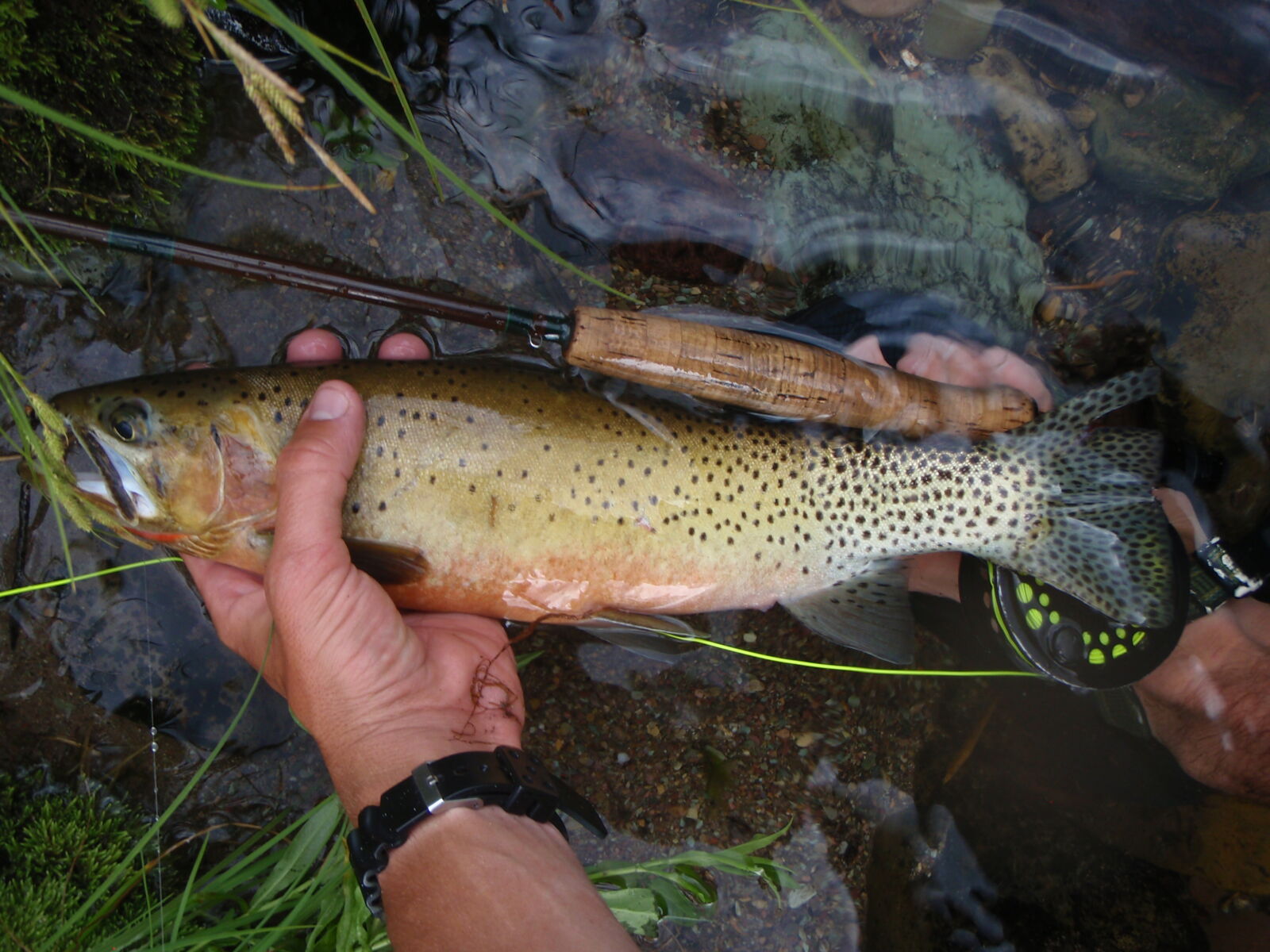When many of us go fishing, we often think about hooking into a big rainbow or brown trout. While both are common on many of our National Forests, they are often non-native species that were introduced by sportsmen years ago. Many of our National Forests are stronghold for native, wild fish that evolved over millennia to survive in site specific environments. Throughout my National Forest stomping grounds of the Northern Rockies, I choose to pursue the Westslope Cutthroat trout.

The Westslope Cutthroat Trout ( Oncorhynchus clarki lewisi ) is a fish worthy of immense admiration and respect.
You'll know one by:
- the copper to olive hues that color their bodies,
- their fine freckle-like spots that are clustered toward their tail, and
- their namesake red “cut” under their throat.
Westslope Cutthroat are native to Idaho and Montana’s upper Columbia River watershed and northern tributaries of the Snake River. They can also be found east of the Continental Divide in the Upper Missouri, Milk and North Saskatchewan Rivers.
While they still occupy a fairly wide spread of country, existing populations of genetically pure westslope cutthroat trout exist in less than three percent of their historic range . Habitat degradation and fragmentation, over-exploitation and hybridization with non-native rainbow trout greatly reduced populations of Westslope Cutthroat.
Within that range, you’ll have to work pretty hard to get yourself a genetically pure Westslope Cutthroat Trout. You’ll often only find them in remote headwaters areas that are fed by cold, clean water. For this reason, Westslope Cutthroat are an “indicator species”, letting biologists know that if these fish are present in a given stream, that stream is likely in good overall health. In their native environment, they survive by feeding on a variety of small aquatic insects, known collectively as macroinvertebrates.
My pursuit of Westslope Cutthroat Trout has led me into some of the most spectacular public lands in the country. Whether it’s tromping around remote stretches of the Flathead River watershed or wading thigh deep in frigid tributaries of the Blackfoot River, finding this fish in its native habitat almost guarantees that you’ll be surrounded by spectacular National Forest lands. If you find ever find yourself on a cold stream in the Northern Rockies, tie on your favorite fly and perhaps you too can find an eager Westslope Cutthroat to make your day.
Be sure to check out a recent New York Times article about Westslope Cutthroat in Montana.

